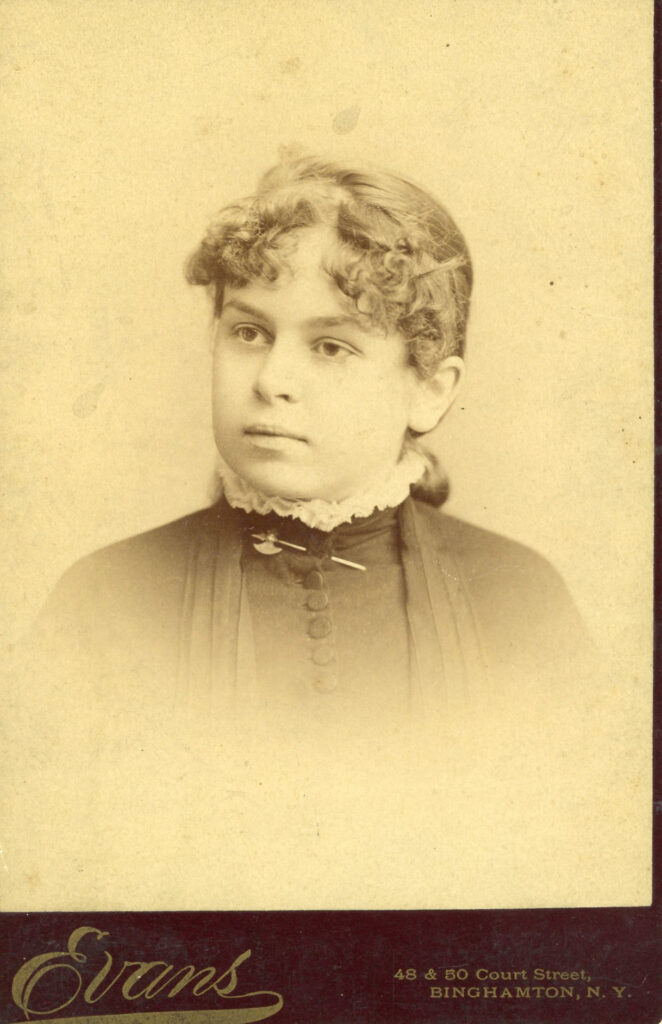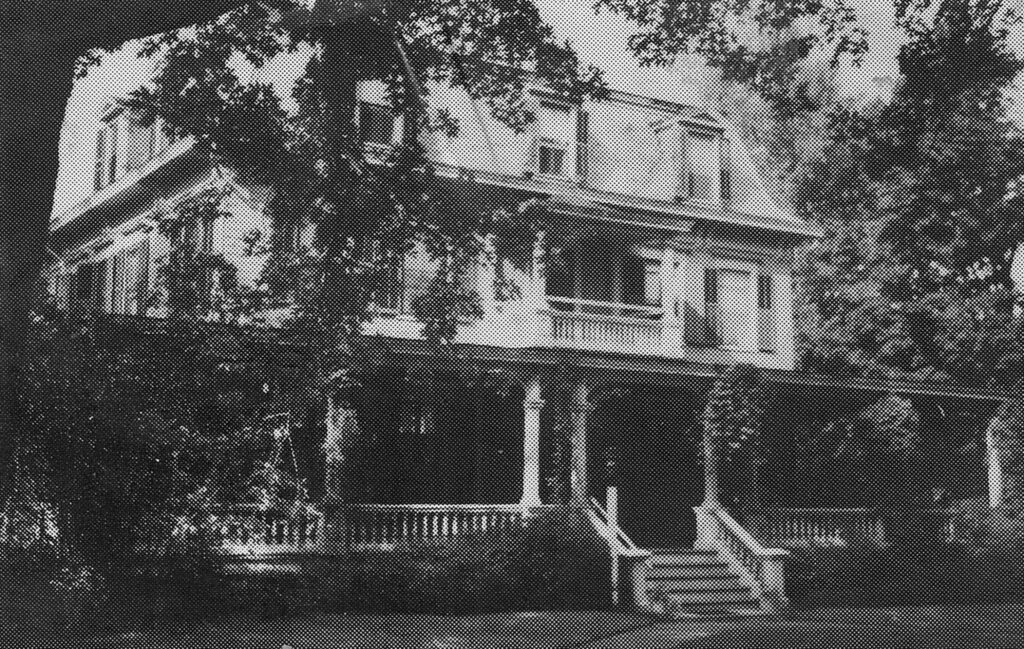 Ridgefield has always been known as a friendly town with a focus on culture and the arts. Embodying these Ridgefield elements, the House of Friends, an upper-class boarding house for writers, musicians, and others in the arts, was opened in 1910.
Ridgefield has always been known as a friendly town with a focus on culture and the arts. Embodying these Ridgefield elements, the House of Friends, an upper-class boarding house for writers, musicians, and others in the arts, was opened in 1910.
Located on Governor Street, where the Ridgefield Visiting Nurse Building is now, the House of Friends was the home of Mary “May” Rockwell. The Rockwell’s had previously owned the Elms Inn on Main Street and were a distinguished family with a long history in Ridgefield.
After her parents died and May Rockwell was alone, she found that her family home was too large for one person. To keep her company, May invited those who were, “intellectually interesting and congenial,” to become boarders (or guests as she called them) in her House of Friends.
May’s first boarder was her first cousin Faustina Hurlbutt. Like May, Faustina was a highly accomplished musician with a focus on piano. Both women had extensive educational training from various seminaries and Oberlin College, at a time when few women even graduated from high school. May had also studied piano in Germany. To earn money, May and Faustina created the Rockwell-Hurlbutt School of Music for lessons, concerts, recitals, and other artistic venues. This school of music was part of the House of Friends.
Since May was an albino, with vision in only one eye, she taught the beginning piano students while her cousin, Faustina, trained the advanced students. Students came from other towns and states to take lessons from these two women who were icons and highly regarded in the community.
Another long-term boarder with a prestigious background was Mabel Cleves. Mabel was a Columbia University educated teacher. She was also trained in the Montessori and Frobel methods of early education. In the early 1900’s, there were very few certified kindergarten teachers in America and Mabel was one of them. She came to Ridgefield with teaching experience in Georgia, Pennsylvania, and New York, and was the first to teach kindergarten in Ridgefield. Mabel also started one of the first preschools in the country.
Mabel, with her hands-on experiential learning techniques for young people, started a whole new trend in education in Ridgefield. It did not matter if she was teaching at a one-room schoolhouse, the Alexander Hamilton School, the Garden School, the Center School, the town hall, or St. Stephen’s, her students always excelled and loved school.
To teach, Mabel needed a corner room with windows and light, a place for gardens, and room for dancing, taking part in the arts, and learning centers. Mabel raised funds or used her own money for materials, to help students needing clothing, food or medicine, or to buy books for the children to take home. To help parents learn about their part in their children’s education, Mabel started the town’s first PTA and Saturday morning storytelling hour for children at the library.
 Mary, Faustina, and Mabel lived together for almost forty years in the House of Friends, but there were also many other residents and visitors of note. Music Professor Charles Barry from Oberlin College would spend the summer along with Mr. Pickett, tutor for the children on the Doubleday Estate. Del Bryon, son of a prominent local doctor, photographer, minister, and missionary to China was one of the women’s favorite guests along with many of their own relatives. They also enjoyed the company of the owners of Le Chateau, Reverend William Rainsford, A.H. Storer, Ruth McDevitt, and visitors of wealthy people in town who loved the atmosphere of the house. Chamber music during dinner hour, cultural discussions, and readings on the veranda during tea were favored by many.
Mary, Faustina, and Mabel lived together for almost forty years in the House of Friends, but there were also many other residents and visitors of note. Music Professor Charles Barry from Oberlin College would spend the summer along with Mr. Pickett, tutor for the children on the Doubleday Estate. Del Bryon, son of a prominent local doctor, photographer, minister, and missionary to China was one of the women’s favorite guests along with many of their own relatives. They also enjoyed the company of the owners of Le Chateau, Reverend William Rainsford, A.H. Storer, Ruth McDevitt, and visitors of wealthy people in town who loved the atmosphere of the house. Chamber music during dinner hour, cultural discussions, and readings on the veranda during tea were favored by many.
The Legacy of the House of Friends and its boarders lives on. Oberlin College still offers the Faustina Hurlbutt Scholarship in music to an outstanding cello, piano, voice or violin student. In 1955, with the opening of Veterans’ Park Elementary School, the auditorium was named after Mabel Cleves for her outstanding work in early education.
The history of the house itself is also of great significance. The original colonial structure was on Main Street where the Lounsbury house is now located. It first served as the home and office of three physicians from the prominent Perry family. Before being redesigned to look more Victorian and became the home of Phineas Lounsbury. When Phineas became governor, he wanted a home with more grandeur. To achieve this, Phineas had his old house (The House of Friends to be) moved to Governor Street and he built the Lounsbury House which is a replica of the Connecticut State House from the 1893 World’s Fair.
When Phineas’ old house was moved to Governor Street, it was purchased at a good price by the Rockwell family. The Rockwell’s and Lounsbury’s were related. After Mary Rockwell died the house was sold and it because a building for businesses. In 1915, the House of Friends was torn down and the RVNA now stands in its place.
Ridgefield may no longer have a House of Friends for cultural activities, but it certainly has numerous separate venues in town of which May, Faustina, and Mabel would be very proud.